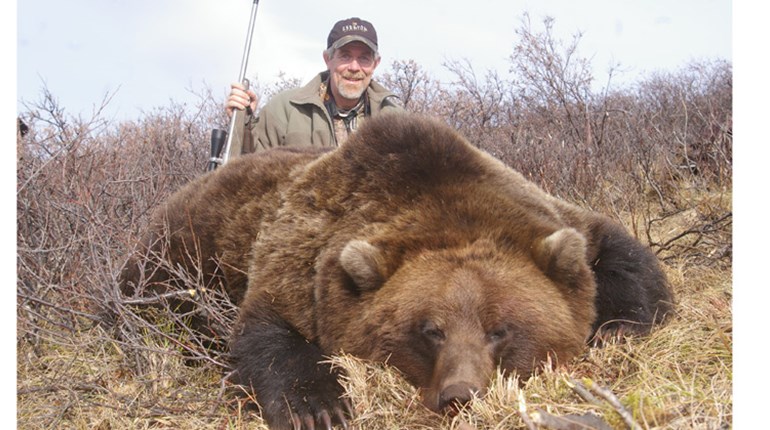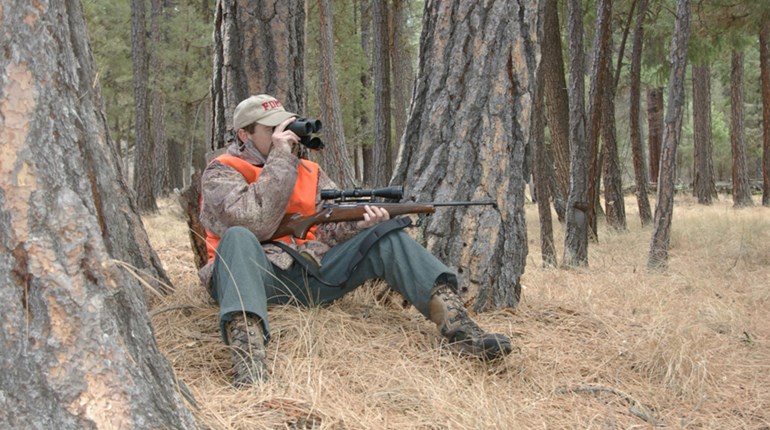
If I’d just taken a big gulp of milk it would have shot out of my nostrils from laughing at my friend Jim’s story. It was hot in elk country and Jim decided to drop trow, let his clothes air out and take a midday break downwind of a wallow. The splashing of a bull in the wallow later awakened him, and in tighty-whities glory he zipped an arrow through the butterball raghorn. That would have been a sight not to see!
I’d advise you to keep your clothes on, but don’t abandon your elk pursuits during the midday. Though you’ll be fighting a battle at noontime with swirling winds and lackadaisical herds, success can and does happen with the sun straight up.
Watch a Wallow or Lick
As Jim demonstrated, wallows have potential to attract bulls of all ages in the midday. Natural mineral licks, especially those by springs, have the same attraction. Once a herd settles for the day, satellite bulls may wander to nearby wallows and herd bulls will even exit beds to refresh their reeking, walking billboard.
It’s a fail-safe midday strategy for Montana outfitter Doug Gardner. He follows a herd until it stops for the morning then sets up at the nearest wallow. Since he knows most of the wallow locations, he already has blinds and treestands in place.
“One archery season I sat an excited bowhunter downwind of a good wallow, and sure enough, a bull slipped right past him and started splashing,” tells Gardner. “I was watching from a ridge above and could tell the bull woke the hunter up. Once the hunter settled his rattled nerves he made a good shot on the bull. Unfortunately, had he waited just a few more seconds he would have seen the giant bull coming in behind the satellite.”
Some wallows may give you a guaranteed, downwind advantage. If not, consider packing in a lightweight treestand to place your scent above the elk and your form beyond their vision. If a treestand isn’t an option scan for downwind ledges and hillsides above the wallow.
Stalk the North Face
Elk tend to retire in dark timber at midday. Think north-facing, cool slopes. Mornings are defined by uphill winds as the slope heats, and in the late afternoon winds shift downhill with cooling temperatures. In the midday winds swirl. When elk relax during the midday they look for areas that still offer them a constant wind advantage over chaotic swirling.
Use your GPS, smartphone or topographical map to locate benches, bowls and buttes that allow the wind to funnel through or across in a consistent direction. Now hope for a testosterone-charged bull that needs to wander. Put the wind in your face and creep through the dark timber at the speed of Congress.
I did this last September and paused on a bench shrouded in pines. A commotion to my left caught my attention, and it transformed into a bull nosing for a bed. Seconds later I dropped the string on my Mathews and helped him with that bedding search—permanently.
Close In and Call
If you’re lucky enough to follow a herd to the edge of its bedroom you can always attempt calling. Circumnavigate the area with a wind advantage, and look for terrain to help you close the distance and veil your ambush. Now use a lost cow call or a young calf mew to agitate a herd bull into thinking that someone has strayed from the herd. If you need to ramp up the message, add the squeal of a satellite bull to make it seem like he’s taking advantage of the gals. Get ready. A bull could show unannounced, right in your face.





































